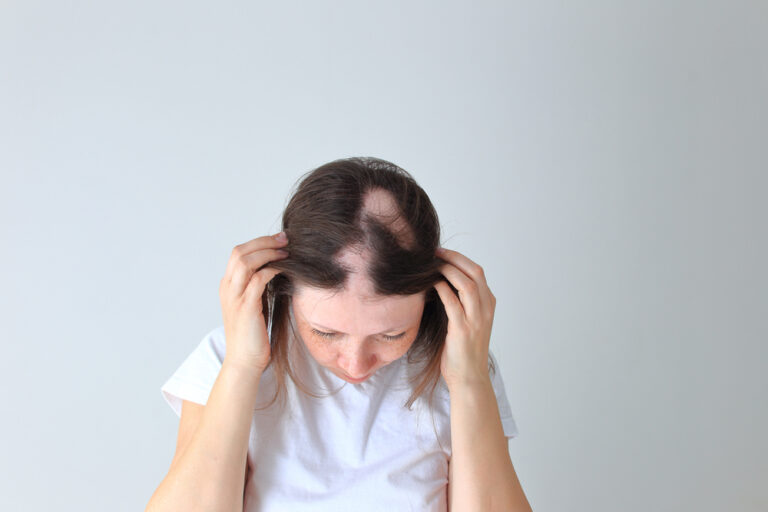There are many types of alopecia that may originate from genetic, hormonal, or health factors. Some examples are alopecia areata and androgenic alopecia. Traumatic alopecia happens due to lesions that cause deterioration of hair follicles on the affected zones. The good news is that the majority of these cases have a solution.
Sometimes, hair loss in certain areas is caused by continuous damaging actions on the scalp, such as pulling or applying pressure. This type of alopecia tends to be more common in women, since they are more likely to put it in tight ponytails and other hairstyles that could damage the hair follicles.
Identifying these behaviors is key to avoid them, considering the damage to our scalp can in some cases be irreversible. Starting a treatment for traumatic alopecia is essential to heal the affected zone and to keep the integrity of our hair.

Main causes of Traumatic Alopecia
- Traumatic alopecia due to traction: The excessive tension breaks the follicle and causes hair loss especially on the temples and frontal area of the scalp. It is commonly generated by hairstyles such as tight braids, ponytails, and hair extensions. It can also be caused by the frequent use of heating tools and chemicals.
- Traumatic alopecia due to the use of headwear: In this case, the damage is similar to traction alopecia, but it is caused due to continuous rubbing or pressure. Wearing helmets, tight caps or other accessories can compromise follicle oxygenation, debilitating the hair.
- Traumatic alopecia due to trichotillomania: This type of alopecia is caused by a hair-pulling disorder that leads to localized hair loss. In some cases, getting rid of this behavior can revert it easily. There are specialized therapies to help the patient avoid these behaviors that cause hair loss. Having achieved this, there is specific treatment to recover hair on the damaged zones.

What are some treatments for Traumatic Alopecia?
In some cases, it is possible to regrow hair after kicking the habits that generate hair loss. Sometimes, the hair follicle has been damaged much further. A diagnosis from a specialist can indicate the most suitable option.
Some of the most common medications and treatments for alopecia are Minoxidil, Platelet-rich plasma (PRP), hair mesotherapy, among others. Get a consultation with your doctor to find the most adequate for your condition.
Hair transplant for Traumatic Alopecia
In some cases, the damage to the scalp is irreversible and treatment is not indicated as a viable option for hair regrowth. A hair transplant can be an excellent solution, achieving natural results without compromising the donor area.
Get your consultation with one of Capilea’s experts to find the best treatment for you. Click here for a free online consultation.















